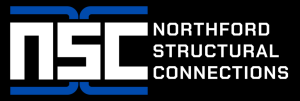

An engineer evaluating different structural connection types at a construction site.
Article Sponsored by:
Northford Structural Connections (NSC) specializes in innovative engineering solutions for enhancing the safety and durability of precast concrete structures. Their patented products, including the Double-Tee Flexible Connection (DTFC) and Double-Tee Connection Pro (DTC Pro), address critical challenges like fatigue, corrosion, and seismic resilience. With a focus on quality and longevity, NSC provides advanced connection systems trusted by industry professionals for both retrofitting and new construction projects.
“`html
When it comes to structural design, selecting the appropriate connections is critical. The integrity and longevity of a structure depend significantly on how well these connections are designed and executed. In this article, we delve into the factors that influence your decision-making process for choosing connections, particularly in the context of precast solutions.
Connections in structural design serve as the link between different elements of a structure, such as beams, columns, and walls. They transfer loads and moments, ensuring that the structure remains stable and performs as intended. The right choice of connection enhances load transfer, accommodates movement, and provides ease of construction. Here, we explore key considerations for making informed choices regarding structural connections.
The first step in choosing connections is to understand the load requirements of your structure. Different connections have varying capacities to handle tension, compression, and shear forces. A comprehensive analysis of anticipated loads, including dead loads, live loads, wind loads, and seismic activity, is essential. Use well-established engineering principles and methods to determine the load that each connection will need to endure.
Connections should complement the material properties of the main structural elements. For example, when using precast solutions, the connection type must align with the precast concrete’s characteristics. Each material—whether steel, timber, or concrete—has unique strengths and weaknesses. Assess factors like weight, thermal expansion, and moisture absorption to ensure compatibility.
There are several types of connections available, including rigid, pinned, and moment-resisting connections. The choice between these can significantly impact the behavior of the structure:
Understanding the intended functionality of your structure will guide you toward the right connection type.
The method of construction can also influence the selection of connections. With precast solutions, connections often need to facilitate quick assembly while maintaining structural integrity. Common methods include:
Evaluate the overall construction process when determining the best connection type. An efficient construction methodology can save time and cost, ensuring that the project remains on schedule.
Environmental factors play a pivotal role in the performance of structural connections. Corrosion, temperature fluctuations, and soil conditions can affect different connection types.
Make sure to thoroughly assess the environmental conditions of the site where the structure will be built.
Connections should not only be robust but also facilitate ease of maintenance. Consider future inspection and repair needs. Some connections can be difficult to access, complicating maintenance efforts. Choose connection types that allow for straightforward access and repair without compromising safety and integrity.
Additionally, it’s crucial to refer to local building codes and industry standards when selecting connections. Different regions may have specific regulations regarding connection design, materials, and load considerations. Adhering to these standards ensures that your structure is compliant and safe, mitigating risks of future modifications or inspections. Knowledge of applicable codes is paramount in guiding engineering decisions.
When navigating the complexities of structural design and connection choices, consulting with structural engineers and professionals is invaluable. They can provide insights into the best practices, innovative solutions, and potential risks associated with various connections. Their expertise can help you avoid costly redesigns and ensure that the structural integrity of your project is not compromised.
Choosing the right connections for your structure is a multifaceted process. It requires consideration of load requirements, material compatibility, connection types, construction methodology, environmental conditions, and maintenance needs. By following these guidelines, engineers and designers can ensure that their choices optimize both safety and functionality, particularly when utilizing precast solutions. With the right connections, structures can achieve their intended purpose with longevity and resilience.
“`

Concrete Strength • Metal Resilience • Connecting Futures
Phone: (203) 777-0751
Email: admin@nscclips.com
The Role of Structural Connections in Earthquake-Prone Areas Introduction In earthquake-prone regions, the integrity of…
News Summary Georgetown County proposes a new zoning category to safeguard the Litchfield Country Club…
News Summary Myrtle Beach is gearing up for the return of The Q golf tournament…
News Summary Myrtle Beach is set for significant golf club renovations at Whispering Pines and…
News Summary Myrtle Beach has seen a nearly 50% drop in crime rates since 2015,…
News Summary The Myrtle Beach City Council has approved a $1.45 million renovation budget for…